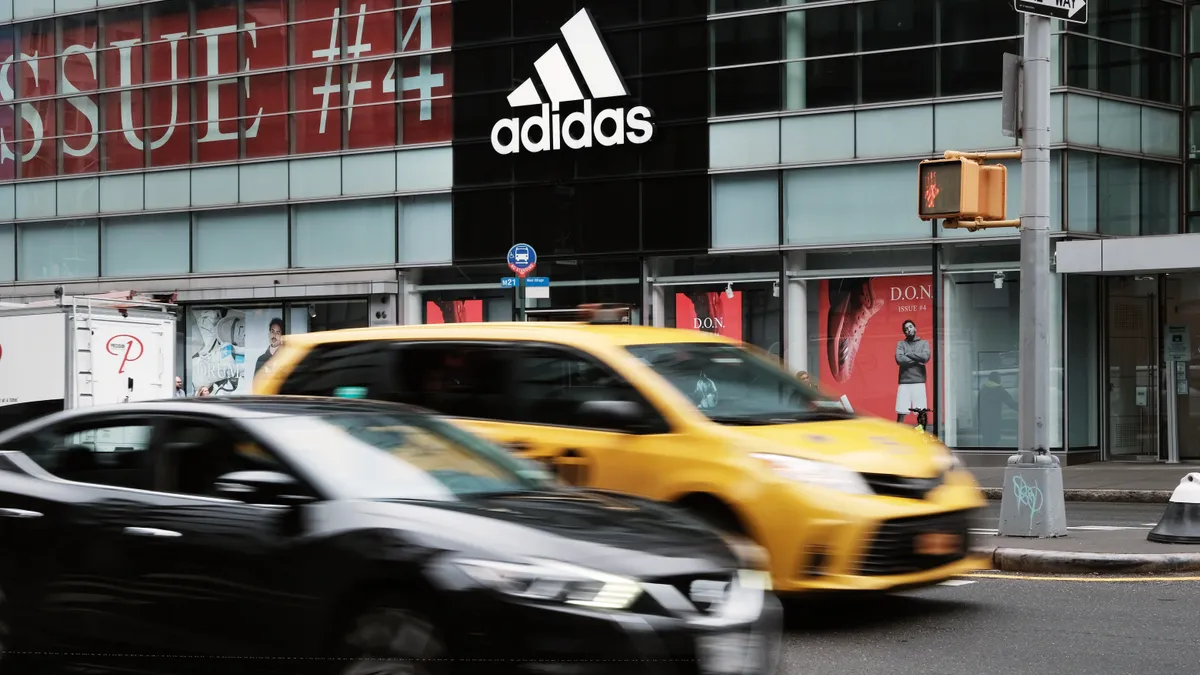Adidas reported Q4 and full-year earnings roughly in line with the preliminary results it put out earlier this year, according to a press release last week. Sales in 2023 fell 4.8% to 21 billion euros (about $23 billion) and while Adidas dodged a much-discussed operating loss for the year, recording 268 million euros of profit instead, the athleticwear brand still posted a net loss from continuing operations of 58 million euros. The loss, which Adidas attributed to “the extraordinarily high tax rate,” is its first annual loss in three decades. Adidas’ last annual operating loss was in 1993 and its last annual net loss was in 1992.
“The Q4 print was somewhat of a non-event given the preannouncement a few weeks ago, and we didn't see or hear any major surprises today,” Wedbush analysts led by Tom Nikic said in emailed comments, noting that guidance for next year is “quite conservative.”
In its release, Adidas touted that its operating profit was almost 1 billion euros better than anticipated: The athleticwear brand in March last year was projecting an operating loss of up to 700 million euros due to fears that the company would have to write off some or all of its leftover Yeezy merchandise. Instead, Adidas has sold off the inventory piece by piece over the past year, bringing in meaningful revenue and leading to multiple guidance raises throughout the fiscal year.
“Although by far not good enough, 2023 ended better than what I had expected at the beginning of the year,” CEO Bjørn Gulden, who arrived from Puma in January last year, said in a statement. “Despite losing a lot of Yeezy revenue and a very conservative sell-in strategy, we managed to have flat revenues.”
The athleticwear brand’s Yeezy saga is not quite over yet. While Gulden has said in the past that Adidas won’t sell Yeezy designs once it sells through its inventory, the company is still going to be working through the leftover merchandise this year. Adidas earlier this year said it would sell the remaining inventory “at least at cost” in 2024 and it would still contribute to sales, just not to profits. The company began its latest Yeezy drop in February, online only.
Gulden also noted that the company reduced inventories by almost 1.5 billion euros and that Adidas has healthy inventories everywhere except the U.S. The executive also highlighted progress with consumers and wholesale partners, thanks to popular footwear models like Samba and Gazelle.
“I hear only positive feedback from our retail partners and believe they all plan to increase the adidas brand share in their businesses,” Gulden said.
He also noted that products for 2024 are “good” and that the athleticwear brand is strengthening the brand with new marketing campaigns.
“Management began the call in a surprisingly defiant manner, defending their business from criticism around the company's product innovation (or the supposed lack thereof),” Nikic said, highlighting recent product innovations and the success of retro styles. “With many of these products resonating with consumers, they expect solid growth in most regions.”
North America is an exception. Currency neutral sales in the region — which is Adidas’ second largest behind EMEA — are expected to decline in the mid-single digits this year, on top of an 18.5% decline in 2023 (a 16.1% decline in currency-neutral terms).
“This is mainly the result of the company’s continued disciplined sell-in to the wholesale channel during the first half of the year as part of its initiatives to reduce high inventory levels in this particular market,” Adidas said in its announcement.
North America has been a problem for Adidas for years, and it’s a major contributor to the widening revenue gap between Adidas and its rival Nike. Adidas’ head of North America left in October. While that region will still be a challenge in 2024, Adidas expects currency-neutral sales at the company as a whole to grow at a mid-single-digit rate this year. That includes 250 million euros of revenue from its Yeezy inventory, compared to the 750 million euros it made off Yeezy last year. Without the Yeezy sales, the core Adidas business is expected to grow at a high-single-digit rate.












